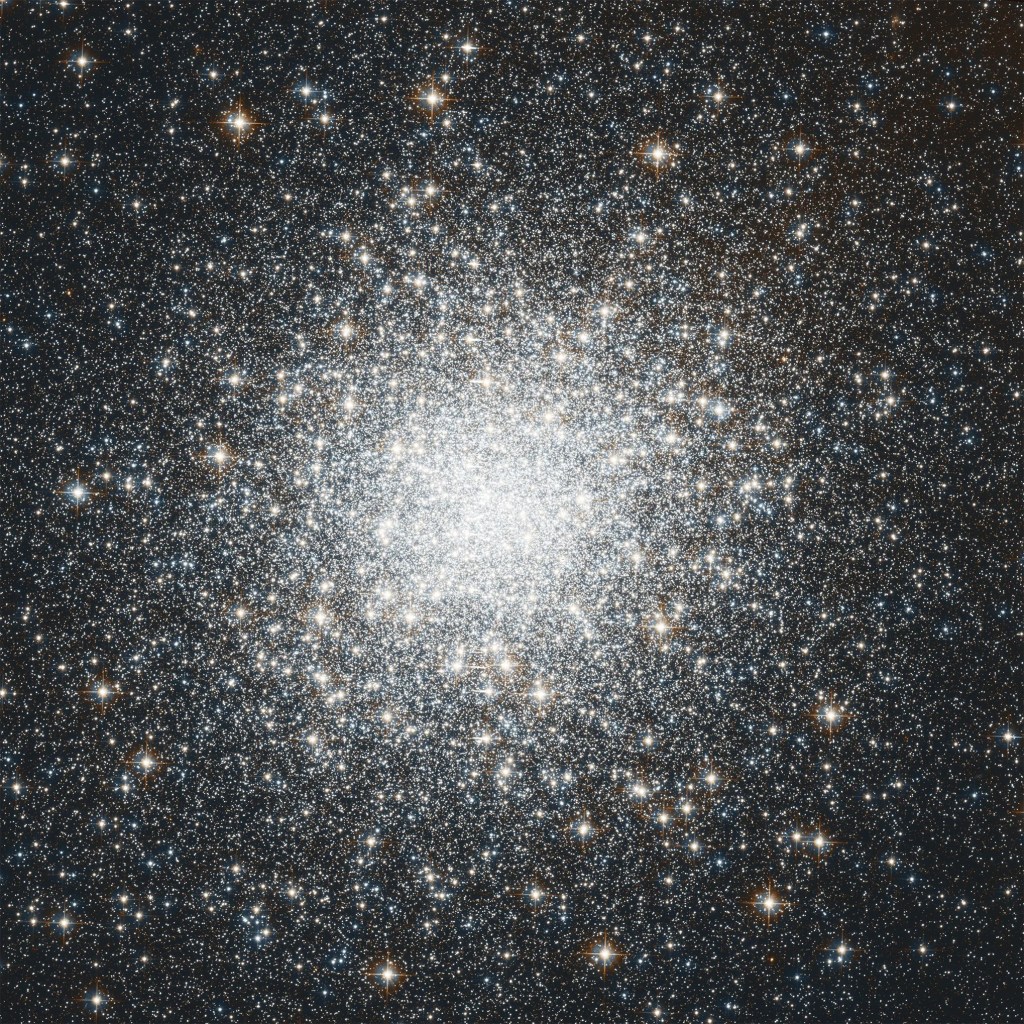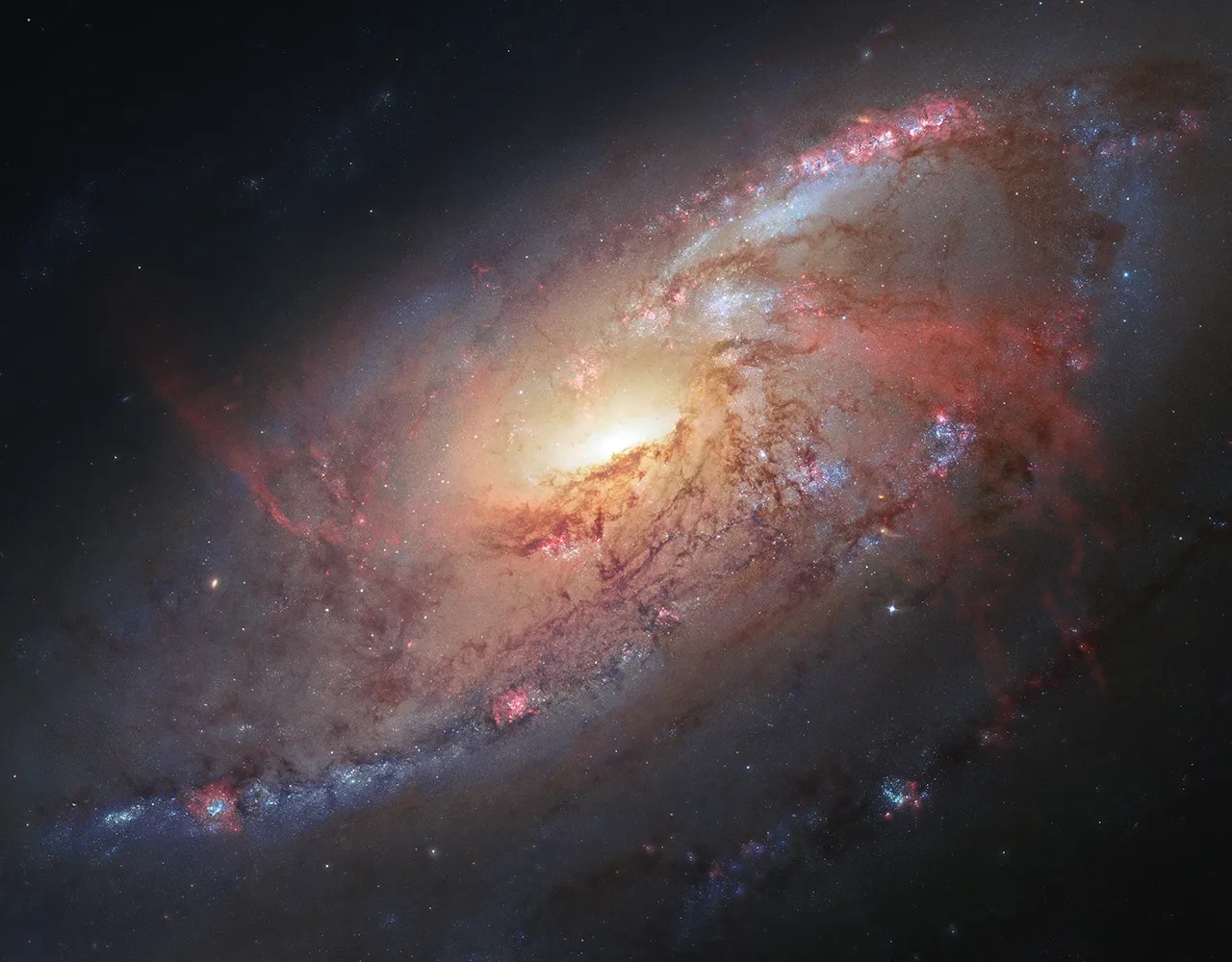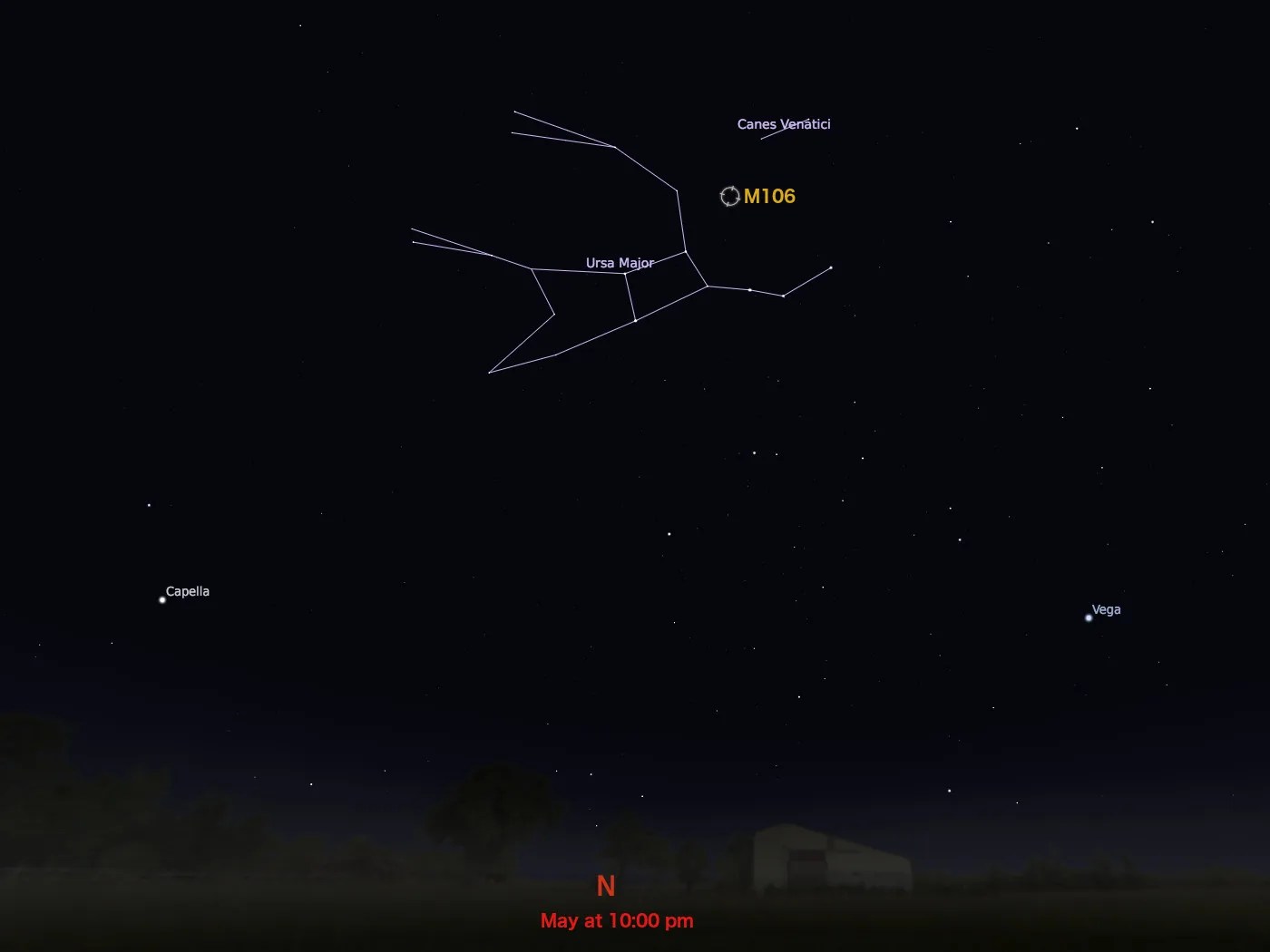Messier 106
Messier 106 was discovered by Charles Messier’s observing assistant, Pierre Méchain, in 1781.
Distance
24 million light-years
Apparent Magnitude
9.1
constellation
Canes Venatici
object type
Spiral Galaxy
This magnificent view of the spiral galaxy Messier 106 (M106) includes data from Hubble exposures and ground-based images taken by the amateur astronomer Robert Gendler. Gendler’s ground-based images were used to fill in pieces of the galaxy that Hubble did not observe. The center of the galaxy is composed almost entirely of Hubble observations. The outer spiral arms are also predominantly Hubble data, but were colorized with ground-based images taken by Gendler and fellow amateur astronomer Jay GaBany.
The image above reveals one of the most striking features of M106: its extra pair of arms. Most spiral galaxies only have one pair of arms, but M106 has an extra set, seen here as red wisps of gas. Unlike the other arms, these two extra arms are made up of hot gas rather than stars. Astronomers attribute these ghostly arms to the supermassive black hole at the galaxy’s center. The extra arms appear to be an indirect result of the violent churning of matter around the black hole.

M106 was discovered by Charles Messier’s observing assistant, Pierre Méchain, in 1781. It is located 24 million light-years from Earth in the constellation Canes Venatici. Although a larger telescope is needed to resolve detail, M106 has a relatively bright apparent magnitude of 9.1 and can be spotted with a small telescope. It is best observed during May.
For more information on Hubble’s observations of M106, see:
- Amature and Professional Astronomers Team Up to Create a Cosmological Masterpiece
- Astronomers Release Most Complete Ultraviolet-Light Survey of Nearby Galaxies
- NGC 4258
Explore Hubble's Messier Catalog
The following pages contain some of Hubble’s best images of Messier objects.

Overview The Messier catalog, begun by astronomer Charles Messier in the 18th Century and revised over the years, includes some…

Better known as the Crab Nebula, Charles Messier originally mistook Messier 1 for Halley’s Comet, which inspired him to create…

Hubble's image of Messier 2 is comprised of visible and infrared wavelengths of light.






























